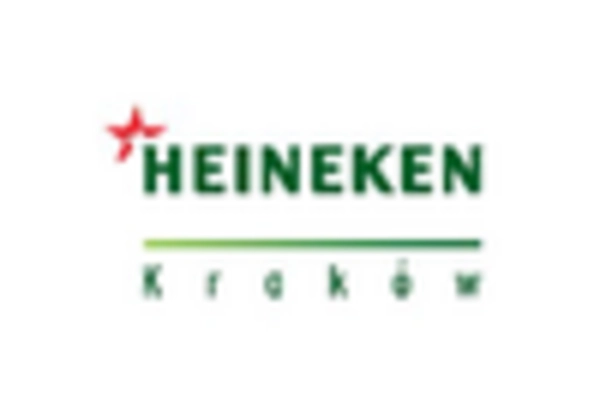Shift in Social Norms
The low alcohol-beverages market is benefiting from a transformation in social norms surrounding drinking. As more individuals embrace moderation and mindful consumption, the stigma associated with choosing lower alcohol options diminishes. This cultural shift is particularly evident among younger generations, who are more inclined to prioritize experiences over excessive drinking. Data suggests that around 40% of millennials in the US prefer low-alcohol beverages during social gatherings, indicating a significant change in drinking habits. This evolving mindset is likely to encourage brands to expand their offerings, catering to a demographic that values quality and moderation. Consequently, the low alcohol-beverages market is poised for growth as it aligns with these changing social dynamics.
Growing Interest in Wellness
The low alcohol-beverages market is experiencing a notable shift as consumers increasingly prioritize wellness and health. This trend is reflected in the rising demand for beverages that offer lower alcohol content while still providing enjoyable flavors. According to recent data, approximately 30% of consumers in the US are actively seeking low-alcohol options, indicating a significant market segment. This growing interest in wellness is not merely a passing trend; it appears to be reshaping consumer preferences and driving innovation within the low alcohol-beverages market. Brands are responding by developing products that align with health-conscious lifestyles, such as low-calorie and organic options. As a result, the market is likely to see sustained growth as more consumers opt for beverages that complement their health goals.
Innovative Marketing Strategies
The low alcohol-beverages market is witnessing a surge in innovative marketing strategies aimed at attracting a diverse consumer base. Brands are increasingly leveraging social media platforms and influencer partnerships to promote their products, effectively reaching younger audiences. Recent statistics indicate that nearly 50% of consumers in the US are influenced by social media when making beverage choices. This trend suggests that effective marketing can significantly impact consumer awareness and preferences within the low alcohol-beverages market. Additionally, brands are focusing on storytelling and lifestyle branding to create emotional connections with consumers. As marketing strategies evolve, they are likely to enhance brand visibility and drive sales in the low alcohol-beverages market.
Rising Demand for Craft Options
The low alcohol-beverages market is experiencing a surge in demand for craft options, reflecting a broader trend towards artisanal and locally produced products. Consumers are increasingly seeking unique flavors and high-quality ingredients, which has led to the emergence of numerous craft breweries and distilleries focusing on low-alcohol offerings. Recent data indicates that craft beverages account for approximately 25% of the total low alcohol-beverages market in the US, highlighting a significant consumer preference for these products. This trend suggests that as consumers become more discerning, they are likely to gravitate towards brands that emphasize craftsmanship and authenticity. Consequently, the low alcohol-beverages market is expected to continue evolving, driven by the growing popularity of craft options.
Regulatory Support for Low Alcohol Options
The low alcohol-beverages market is benefiting from a favorable regulatory environment that encourages the production and sale of low-alcohol products. Recent legislative changes in various states have facilitated the introduction of low-alcohol beverages, making them more accessible to consumers. This regulatory support is crucial, as it allows manufacturers to innovate and expand their product lines without facing excessive restrictions. Furthermore, the US government has recognized the potential health benefits associated with lower alcohol consumption, which may lead to further supportive measures. As regulations continue to evolve, the low alcohol-beverages market is likely to experience increased growth opportunities, enabling brands to reach a broader audience.

















Leave a Comment